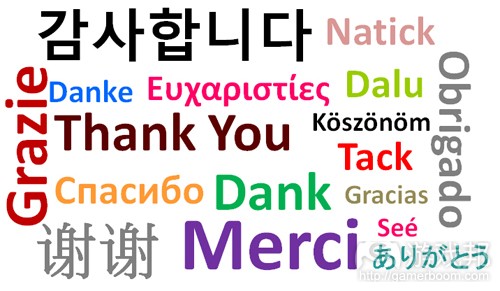语言是游戏开发者实施本土化策略的关键
作者:Christoffer Nilsson
作为手机游戏开发者,如今的我们总是很难决定该选择哪种语言去实行游戏本土化策略。除此之外我们也需要明确本土化需要执行哪些任务。游戏中总是会出现一些文本内容,如果你是通过苹果的App Store或Google Play发行游戏,你便需要翻译,更新这些文本内容或关键字。
本土化应用商店的描述文本是件很简单的事。这是关于你最初呈献给玩家的内容,并影响着玩家的购买和下载决定。你要记得,地球上的大多数人都不是说英语。根据Common Sense Advisory (游戏邦注:美国著名调查机构),52%的人表示他们只会在网上购买那些基于本地语言呈现相关产品信息的内容。在法国和日本这一数据更是高达60%。因为描述中的文本规格是受限制的,所以它并不会花多少钱(当你使用翻译服务时,你是基于每个单词而付费)。围绕着描述的其它文本内容将呈现出当地商店的本土语言(谷歌和苹果对商店都实行了完全的本土化策略),所以本土化元素才能更好地融合在一起,并留给用户一种专业的印象。
如果你正在对描述执行本土化策略,你便不能忽视关键词,再一次地你需要确保单词不能太多,否则将会花费大量的成本。
关于本土化更新,你需要考虑是计划多久发行一次更新。与合适的翻译服务提供者合作非常重要——你需要学会灵活周转并远离那些收取最少费用的提供者,因为通常他们所提供的服务质量也会是最糟糕。
你是否能够在真正的游戏中翻译文本?如果游戏推广是面向全世界,那么本土化便能够帮助你延伸游戏的触及范围并获得世界各地的用户。让你的玩家可以基于当地语言享受游戏将有效提高他们的游戏体验,并为你带来更高的评价。这些利益当然远远超过成本。游戏化成本主要是受到游戏中的文字数量以及目标语言数量的驱动。最常见的方法便是将应用商店的元数据通过本土化整合到更多语言中,而不是面向真正的游戏。
App Annie在2013年的GDC大会上根据iOS App Store和Google Play上的游戏下载情况和收益对国家进行了排列。大多数开发者都拥有同样的目标,要么获得更高的游戏下载量,要么赚取更多利益。根据假设让开发者面对苹果和谷歌两个平台分别创造2个语言列表;一个是关于获取主导地位(即获得最大下载量),另一个则是满足自己的进一步需求(实现收益最大化)。我们的列表名为最高下载和最高收益。
假设英语是游戏的源语言,所以我们在此将排除它。
iOS App Store的最高下载:中文,日语,俄语,法语,德语,意大利语
iOS App Store的最高收益:日语,中文,德语,法语,俄语,韩语
Google Play的最高下载:韩语,俄语,德语,日语,巴西语,繁体中文,西班牙语
Google Play的最高收益:日语,韩语,德语,法语,俄语,繁体中文
幸运的是法语已经包含在所有列表中。
虽然西班牙语只出现在Google Play中,但是考虑到App Annie的这一排列是基于国家而非语言,所以这一情况也是成立的。根据T-Index,西班牙只拥有2500万网民。而如果是说讲西班牙语的网络用户的话,该数值便高达1.87亿——这是继英语和中文后的第三个最大群体。同时考虑到美国在排行列表中的主导地位以及在美国有15%以上西班牙籍公民,所以将西班牙语添加到推荐语言中是再好不过的选择。
Google Play列表中也少了简体中文这一语言——因为Google Play被中国市场阻挡在外,并且在中国其它当地Android商店更受欢迎。如果你正在使用其它应用商店(如亚马逊),我便会建议你将内容翻译成简体中文。
根据开发者实施本土化的主要目标(最大化收益或下载量)以及他们所瞄准的应用商店,我们所建议的目标语言分别是:
iOS App Store的最高下载:中文,日语,俄语,法语,德语,意大利语,西班牙语
OS App Store的最高收益:日语,中文,德语,法语,俄语,韩语,西班牙语
Google Play的最高下载:韩语,俄语,德语,日语,巴西语,繁体中文,西班牙语
Google Play的最高收益:日语,韩语,德语,法语,俄语,繁体中文,西班牙语
(本文为游戏邦/gamerboom.com编译,拒绝任何不保留版权的转载,如需转载请联系:游戏邦)
Where will your app go today? Language choice is key, find out which ones work best
by Christoffer Nilsson
As a mobile game developer it can be difficult to decide which languages to localize a game into. In addition it also has to be decided what to localize. There’s the text that appears in the game and if you publish via Apple App Store or Google Play you can also translate the description, updates and keyword texts.
To localize the app-store description text is a no-brainer. This is what you front your game with and what people will base their buy or download decision on. Remember, most people on this planet don’t speak English. In “Can’t Read Won’t Buy”, the Common Sense Advisory showed that on average, 52% of people reported that they would buy only at websites where product information is presented in their language. In France and Japan the figure was 60 percent! The amount of text in your description is limited so it won’t be expensive (you pay per word when you use a translation service). All other text surrounding your description will be in the country store’s native language (Google and Apple fully localize their stores) so localized material will blend in much better and give a professional impression.
If you are localizing the description you may as well localize your keywords, again as the amount of words will be low, so will the cost. Be sure to check out this interesting article on the subject
How To Get 767% More Downloads By Localizing App Keywords
With regards to localizing updates, you need to consider how often you plan on releasing updates. It becomes important to work with the right translation service provider – you need speedy
turnaround and stay away from vendors with minimum fees as the translation batches will be small.
Now, with the store metadata out of the way. Should you translate the text in the actual game? Distribution is worldwide, by localizing you extend your reach and achieve a global audience. Allowing your players to enjoy the game in their native language will positively increase their experience and lead to better reviews. These benefits do of course need to be weighed against the cost.
Localization costs will be driven by the number of words in your game and the number of target languages. It’s a common approach to localize the app-store metadata into more languages than the actual game.
So, what languages then… App Annie to the rescue! During App Annie’s very interesting GDC 2013 talk they ranked countries in iOS App Store and Google Play for downloads and revenue specifically for games. Most developers would have the common goal of either wanting to get their game downloaded as many times as possible or generate as much revenue as possible. Based on that assumption lets for each platform (Apple and Google) create two language lists; one for for developer seeking world domination (maximize downloads) and another one for the greedy (read maximize revenue). Our lists will be called Top Downloads and Top Revenue.
We’ll exclude English with the assumption that English is your games source language.
iOS App Store Top Downloads: Chinese, Japanese, Russian, French, German, Italian
iOS App Store Top Revenue: Japanese, Chinese, German, French, Russian, Korean
Google Play Top Downloads: Korean, Russian, German, Japanese, Brazilian, Traditional Chinese, Spanish
Google Play Top Revenue: Japanese, Korean, German, French, Russian, Traditional Chinese
Luckily it seems that France is included in all ranks that also have Canada so we don’t have to add French.
Spanish is notably missing from all groups but Google Play Downloads. As the App Annie rankings are based on countries and not languages this makes sense. Spain with it’s 25M internet population, according to T-Index, is fairly small. If we consider Spanish speaking internet users we’re talking about a whopping 187M users – the third largest cluster after English and Chinese. Also given the dominance of United States in the rankings and that 15%+ of the population in the US is hispanic it would seem a good idea to add Spanish into our recommended languages.
Simplified Chinese is also missing from the Google Play groups – the reason for this seems to be Google Play being blocked and other local Android stores being more popular with the Chinese. If you use other app-stores (like Amazon) then we’d most definitely would recommend translating into simplified Chinese.
Based on the developers main goal with localization (maximize revenue or downloads) and what app-store they are targeting; our recommended target languages are:
iOS App Store Top Downloads
Chinese, Japanese, Russian, French, German, Italian, Spanish
iOS App Store Top Revenue
Japanese, Chinese, German, French, Russian, Korean, Spanish
Google Play Top Downloads
Korean, Russian, German, Japanese, Brazilian, Traditional Chinese, Spanish
Google Play Top Revenue
Japanese, Korean, German, French, Russian, Traditional Chinese, Spanish(source:gamasutra)


























1.jpg)
.jpg)
2.jpg)
3.jpg)
4.jpg)














 闽公网安备35020302001549号
闽公网安备35020302001549号